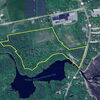Processing Your Payment
Please do not leave this page until complete. This can take a few moments.
The circle of life | Maine's retirement communities focus on providing multiple options for care at one facility
According to Karen Hogan, a Piper Shores sales counselor, most of the facility's residents sign a contract for "lifecare," which for a fee provides them priority status at The Holbrook. (Hogan declines to discuss Piper Shores' fee structure, saying only that its staff meets with customers to determine their needs.) The lifecare option, which has been part of Piper Shore's offerings since it opened in 2001, is an outgrowth of the increasing popularity of long-term health care insurance, which covers all the assistance required for dealing with a chronic illness or disability for an extended period of time. In addition to acting as long-term care insurance, a lifecare contract also provides residents with priority status for moving through the continuum of care, from independent living to long-term nursing care.
The expenses of health and home services required after retirement can be substantial. According to the Health Insurance Association of America, one year in a nursing home costs more than $50,000 on average. Hogan says Piper Shores clients are choosing lifecare options as a way to keep their children from having to assume that cost. "They see it as a way to relieve that burden for their children," says Hogan.
Piper Shores' lifecare option highlights a trend in retirement living ˆ in Maine and nationally ˆ toward communities that address the full spectrum of retiree life, from active to infirm. In the past 15 years, there has been an increase in the construction of so-called continuous care retirement communities, or CCRCs, which provide multiple levels of care for retirees who have planned well for their later years. (CCRC is a designation involving licensure, though it is common in the industry to refer to CCRCs when discussing retirement communities that offer a continuum of care even without the licensure.)
The options for affluent seniors in particular are expanding rapidly. The Dallas Morning News reported in January that ˆ thanks in part to the deep pockets of some baby boomers ˆ dozens of "luxury retirement centers" are slated for construction nationwide. "What these people are looking for in retirement is the brass ring of life," William Frey, a demographer with the Brookings Institution in Washington, D.C., told the paper. "They've worked hard for years and years and have a lot of money to spend, soˆ they lunge for the brass ring. The idea is, 'We've earned it; therefore we deserve it.'"
In Maine, while the growth is slower, developers continue to see opportunity in building facilities ˆ particularly those rife with amenities and options for later, less healthy stages of life ˆ for seniors. While some observers question whether these facilities meet the needs of Mainers at all income levels, developers say they are simply responding to market demand.
For his part, developer John Wasileski bills Highland Green in Topsham as "Maine's first adult resort community," and doesn't shy away from the status of a community with luxurious amenities. "I don't get caught up with labels," he says. "When we say 'resort,' we are talking about having most of the attractive assets of the community, all on campus. These retirees want it all."
Setting the stage
In many ways, the current growth in Maine's retirement communities began more than 20 years ago. "I like to joke ˆ but it's not really a joke ˆ that we all went to the same seminar in the early 80s," says Wasileski, referring to a gathering for builders, hospitals and nursing homes about Maine's need to develop retirement communities. At the meeting, which was sponsored by the state Bureau of Elder and Adult Services, "They talked about this incredible demographic bubble that was coming," says Wasileski. "The message for builders and entrepreneurs like myself was that market-rate housing was the wave of the future, and [retirement communities] was a growing niche."
Wasileski, a housing developer in Maine since the 1970s, was one of the first to try to fill that niche, building OceanView at Falmouth, which includes both independent and assisted living facilities, in 1985. Other builders and developers followed suit. From 1985 to 1989, six more retirement communities ˆ including Clover Manor in Auburn and Huntington Commons in Kennebunk, both of which were built by nursing home operators, and Schooner Cove, a Damariscotta facility built by Miles Healthcare/Miles Hospital ˆ sprang up. According to Wasileski, hospitals and nursing homes recognized that retirement communities could be sources of income as well as "feeders" for their health care facilities.
(Denise Pease, marketing director for Quarry Hill in Camden, which is owned and operated by Rockland-based Northeast Health, disagrees with that motivation. "I don't believe the decision to create Quarry Hill was for 'feeding' the other organizations," she says in an e-mail message, referring to Northeast Health subsidiaries such as Penobscot Bay Medical Center, Kno-Wal-Lin Hospice Care and Knox Center for Long-Term Care. "There was extensive market research performed prior to the approval of our community that showed a real need for services like ours.")
In the 1990s, Gov. Angus King's administration spearheaded an overt push to bring retirees to Maine. A 1999 study released by the State Planning Office ˆ "A Golden Opportunity II: How Maine Can Enhance The Retirement Industry" ˆ set the tone; the report "strongly suggest[ed] that the governor and Legislature take action to make Maine the premiere retirement destination in the Northeast." The report went on to say, "The retirement industry is green and growing. Targeting this industry for development would mean tapping into a growth industry, not trying to fight a downward trend."
But staff at retirement communities report their out-of-state residents didn't come here as a result of those efforts. Most chose Maine because of personal connections ˆ perhaps through children who live here or through memories of family summer vacations. Policies today still welcome out-of-state retirees, but there is no longer an overt effort in state government to reach them, says Martha Freeman, director of the State Planning Office.
Regardless, at least two more retirement communities ˆ Piper Shores, owned by Maine Life Care Retirement Communities LLC, and Camden's Quarry Hill ˆ opened in the state in the last several years. "There used to be only one or two options for retirees," says Laurie Lachance, president and CEO of the Maine Development Foundation and former state economist. "Now the numbers are in the teens."
These communities are often filled to capacity, according to their operators. Piper Shores, for example, has been full since July 2003; a potential resident will typically wait one to three years for an apartment or cottage. According to Karen Hogan, many on the waiting list are "making a proactive choice. They are choosing to get on the waiting list before they need a long-term care option."
A continuum of care
The need for long-term care has driven the rise of retirement communities such as OceanView, which offers independent living situations for retirees as well as assisted living. Residents of its 67 cottages live as independently as if they were in their own homes, while residents of OceanView's 70 apartments have access to resources such as dining or medical care. Amenities include meal delivery, on-site banking, 24-hour nursing care (available through OceanView's assisted living facility) and a fitness studio.
If residents require more direct assistance, they can move into the community's assisted living facility, Falmouth House. Unlike communities with CCRC licensure, OceanView does not offer skilled nursing. "We have chosen not to have a nursing home component ˆ we don't want all the regulations," says Peggy Eberly, OceanView's director of operations. "But we offer hospice care and other end-of-life services at Falmouth House."
According to Karen Hogan, Piper Shores is the only retirement community in Maine that provides independent living, assisted living and skilled nursing all in one place. "More and more frequently you're starting to see several levels of care available in one basic community," says Lachance.
That's a big change from the past, when facilities for seniors offered a single level of care. As recently as the 1980s, seniors were limited to staying in their own homes, moving to independent living facilities (for people who needed almost no assistance with their day-to-day living) or entering skilled nursing facilities (where residents live with limited mobility or struggle with diseases such as Alzheimer's).
Residents at Wasileski's Highland Green also have long-term care options, receiving priority access to The Highlands, an assisted living facility across the street from Highland Green. Though there is almost no mention of the connection between the two communities in any of their marketing materials, Wasileski says about 50% of residents move there because of The Highlands.
Other communities have similar arrangements. "We offer a full continuum of care, but ask for no long-term financial commitment from our residents," says Pease of Quarry Hill, which offers levels of service from independent living through long-term nursing.
As Pease indicates, these facilities don't come cheaply. The most luxurious living accommodations at Highland Green have purchase prices near $600,000. Typical monthly rents and fees at Huntington Common, Quarry Hill and Highland Green range from $2,000 to nearly $6,000, depending on the size of the apartment or cottage and the level of care. The AARP website notes that "the costs of living in a CCRC can be quite high, and unaffordable to those with low or moderate incomes and assets."
The cost debate
Many facilities frame a purchase price as a capital investment upon which residents can see a return. When people decide to move into Piper Shores, for example, they pay an up-front entrance fee ˆ similar to the purchase price of a house or condominium. Included in the entrance fee is a guaranteed 90% return on the investment if they move out of the community. If a resident dies, the return goes to his or her estate. The arrangement is a typical one for CCRCs. (Some communities, such as OceanView, offer a 100% return on the investment.)
Lachance sees a decidedly upward trend in the cost of retiring at one of the many new continuing care facilities in Maine. "The cost of living at these facilities is often market-based," she says. "They really are for retirees with an income level above what a traditional Maine family has."
Lachance also worries about what she describes as a "gap" for middle-class Mainers who are hoping to retire soon. "Folks who have income between $18,000 and $35,000 per year really have very few options because they make too much money to qualify for lower-income retirement options but do not earn enough to pay for the higher scale options," she says.
Staff at retirement communities, however, are confident that they provide a reasonably priced option for retirees. Polly Miller, director of marketing for Huntington Common in Kennebunk, disagrees with the notion that the newer wave of retirement homes is for the wealthy. "We are fairly priced with all our competition ˆ it's the quality of life and care being given that they are paying for," said Miller.
And, says Pease of Quarry Hill, if retirees have planned well for retirement, they can afford quality care. When asked about retirement communities catering to affluent seniors, she replies, "I find this to be a common misconception of retirement communities. Seniors who spent their adulthood working, saving and investing are the majority of our residents. I wouldn't necessarily deem them all wealthy... they planned for their 'golden years.'"
Lachance does not get a sense that developers of retirement communities, such as Wasileski, are targeting their efforts strictly toward wealthy retirees. "If a developer has to pay full price for land, that developer needs to charge what the market will bear," she said. "The developers that I've dealt with do want to reach out and make [these facilities] available to more people."










Comments